When the reigning yellow jersey and the best all-round bike rider in the world start the Tour de France with a 1x drivetrain on the hilly parcours of the Grand Départ, the whole sport takes note.
It had been coming. Wout van Aert rode to a Milan-San Remo podium using a single-chainring drivetrain in March, 1x was prevalent at Paris-Roubaix in April, and then Jonas Vingegaard won a mountainous stage five at the Critérium du Dauphiné using a 1x drivetrain.
Granted, hearing of riders, especially SRAM-sponsored riders, using a single chainring is nothing new in 2023 – but it is at the Tour de France.
And, seeing it in action with van Aert and Vingegaard – with the latter going on to defend his Tour title – on non-flat stages was enough to raise a few eyebrows.
Later in the race, Lidl-Trek rider Mads Pedersen would win stage eight on 1x, once again using a SRAM Red AXS setup, while Vingegaard rode into Paris with his Jumbo–Visma team-mates as Tour champion on a yellow, 1x-equipped Cervélo S5.
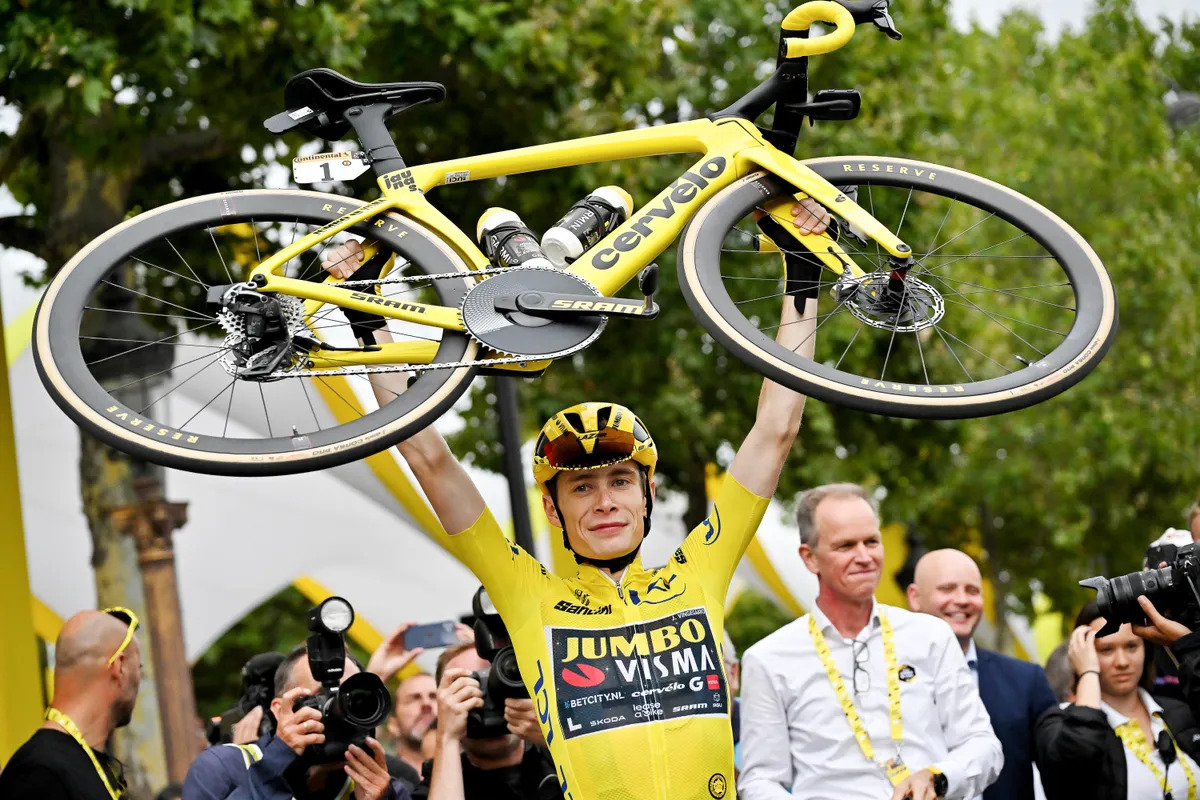
After a false start, is the tide turning on 1x? Having left its mark on the Tour’s road stages for the first time, is a single-ring drivetrain likely to become a popular option for riders at future Grand Tours?
We’ve spoken to SRAM and Shimano – the two groupset giants with opposing views on 1x for the road – as well as Uno-X Pro Cycling, one of the early-adopters of 1x in road racing, to find out.
How did we get here?
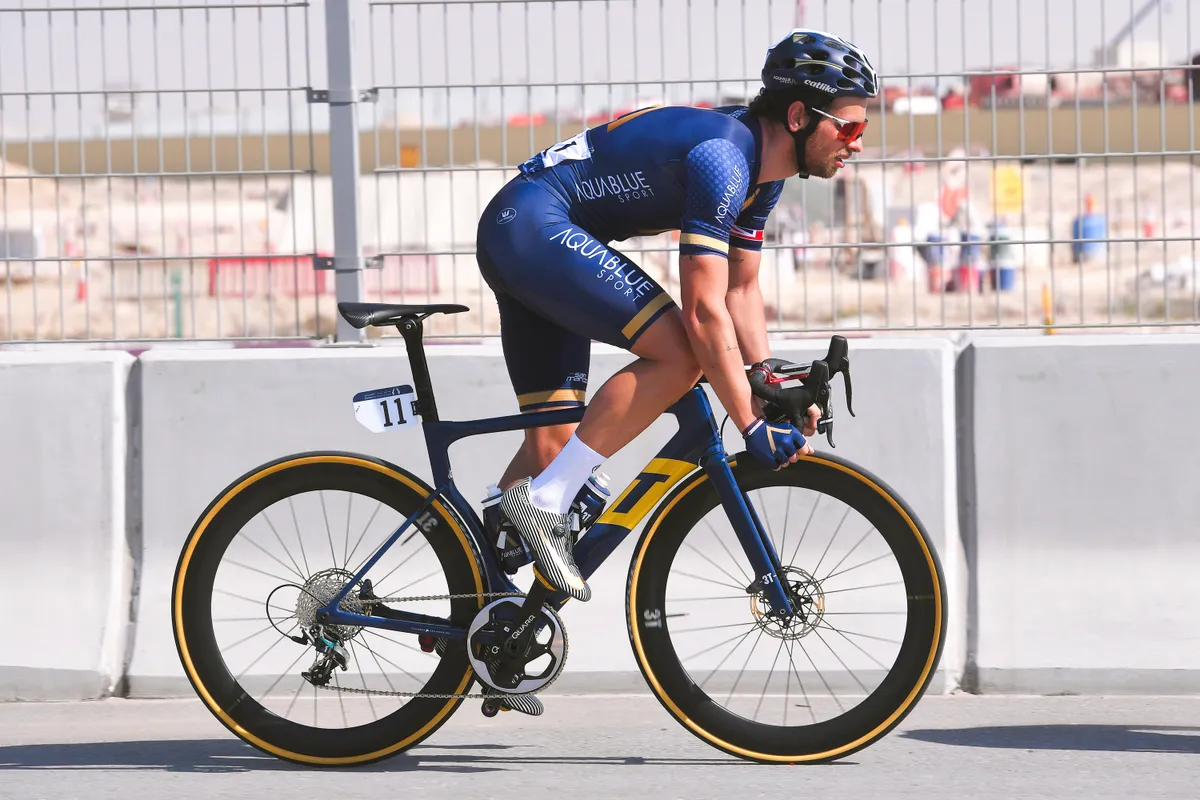
The history of 1x drivetrains on road bikes is hardly positive. “It’s just a track bike with gears,” said Adam Blythe about his team-issue, 1x-specific 3T Strada back in 2018. The pro-cyclist-turned-commentator was one of the original critics of a single chainring for top-level racing, citing a lack of gear options as one of the reasons his then team, Aqua Blue Sport, folded.
Looking back, you could say the 3T Strada was ahead of the curve – 1x has become a bigger part of the conversation across road and, more significantly, the booming gravel scene, in the five years since 2018.
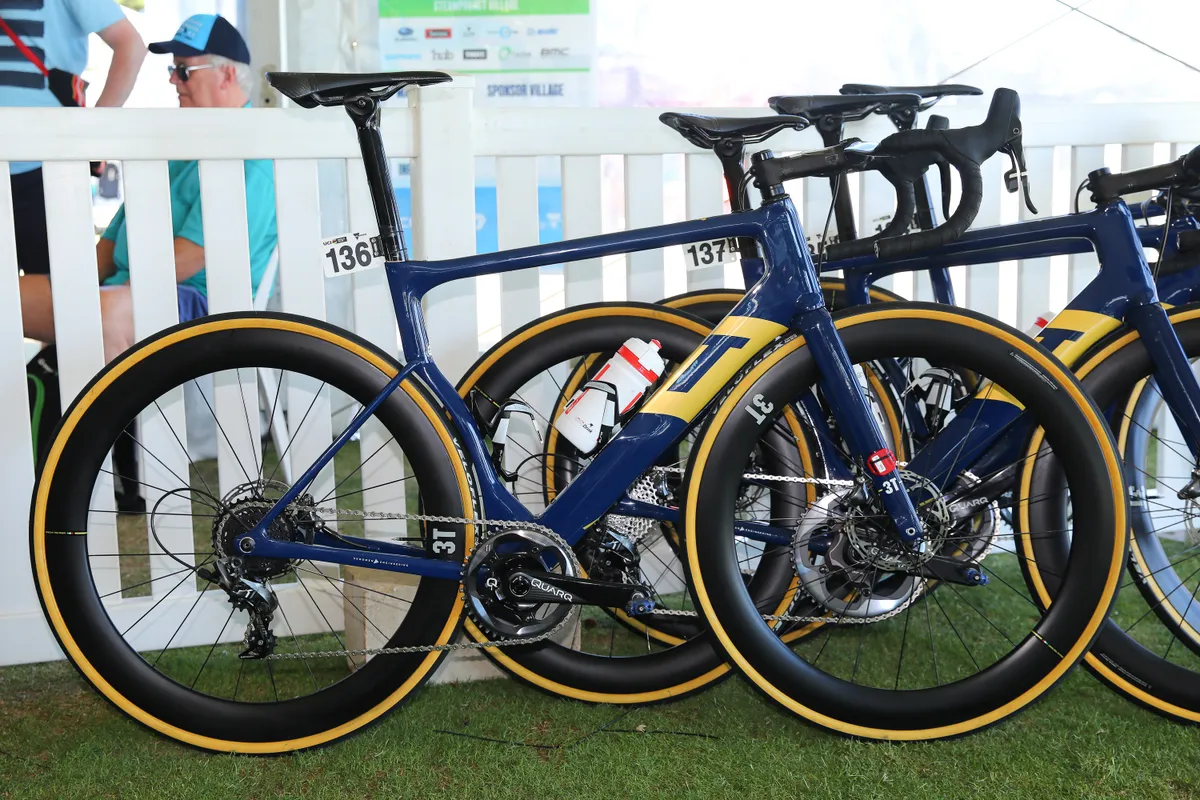
But, realistically, the technology just wasn’t quite there. At the time, 11-speed rather than 12-speed was the standard, and gear ratios have increased, too. Back in 2018, Blythe was right.
Since then, the use of 1x drivetrains for racing has largely been limited to time trials, which is no great surprise. There, it’s a controlled situation, on a much more predictable, shorter course. Coupled with the aero and chainline benefits, as well as the fact that non SRAM-sponsored teams are more willing to bend contracts for time-trial tech, it’s often a no-brainer on an appropriate route.
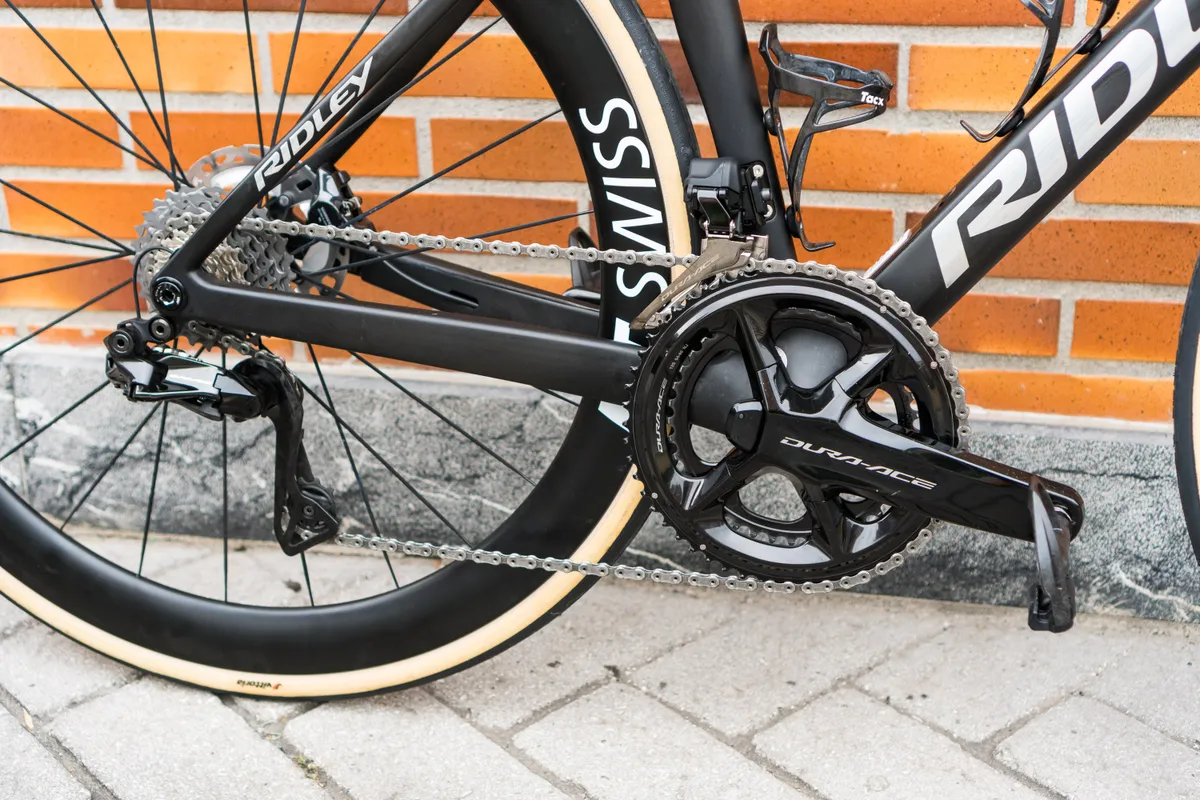
Speaking of sponsorship, neither Shimano, who we’ll hear from later, or Campagnolo offers groupsets engineered for a single chainring on the road. By our reckoning, only one Shimano-equipped team, Uno-X, used 1x at the men’s Paris-Roubaix, swapping in PCD chainrings in place of the standard, 2x Dura-Ace arrangement.
As you’d expect, no Shimano or Campagnolo team used 1x at the Tour de France, and while Jumbo-Visma and Lidl-Trek experimented, SRAM’s third sponsored team in the men’s WorldTour, Movistar, stuck to the traditional 2x system.
How does 1x for the road work?
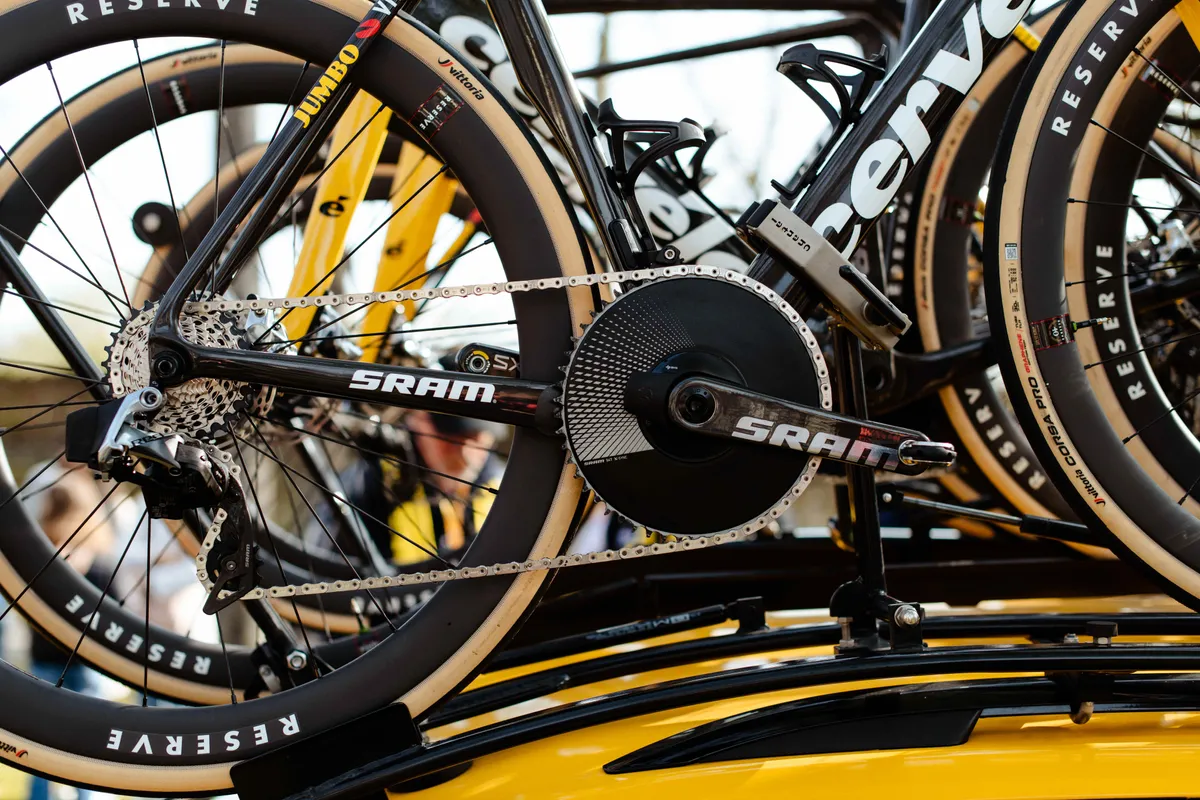
On paper, it might seem that ditching the inside chainring and front derailleur would make life easier, but it can, in fact, complicate things more.
First, you can’t use a standard chainring when moving to 1x. It has to be re-engineered in favour of a ‘narrow-wide’ design. This pattern limits the lateral movement of the chain and, in turn, reduces the chance of dropping the chain – although, as Primož Roglič, using SRAM’s 1x-only XPLR gravel drivetrain, found out at the Giro d’Italia, this is still a possibility.
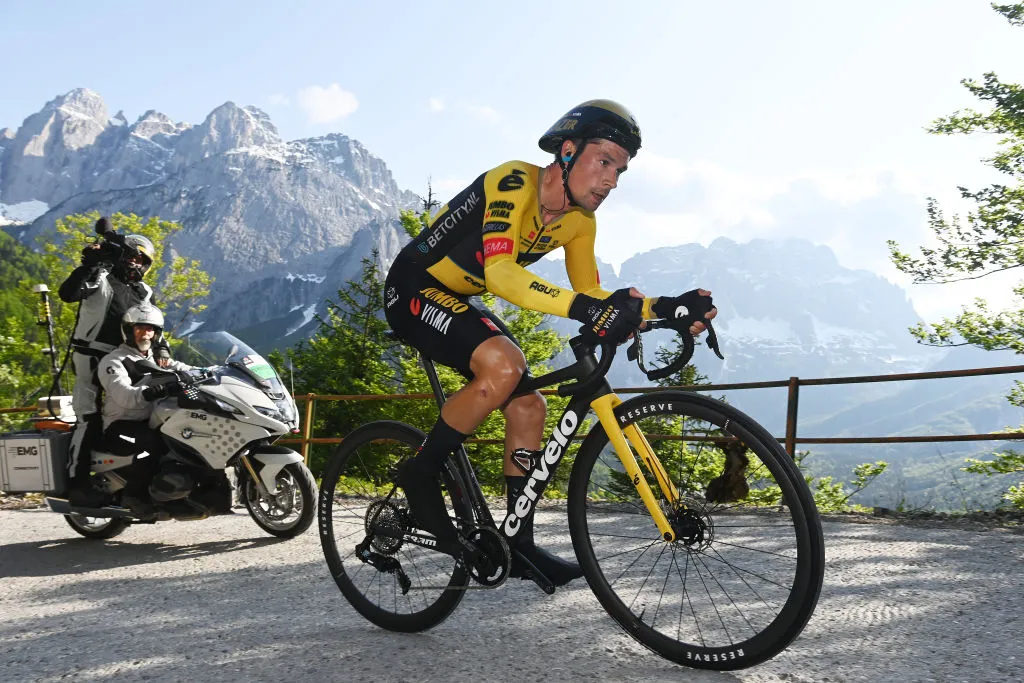
Looking to overturn Geraint Thomas’ overall lead on the stage 20 uphill time trial, and having switched from a time trial bike to a 1x-equipped road bike at the foot of the steep climb, Roglič’s chain dropped after he hit a crack in the road. Roglič’s chances of pulling on the maglia rosa flashed before his eyes.
But a quick-fix and push from his mechanic saw the Slovenian soon regain momentum to overturn Thomas’ lead and, in effect, win the race.

When we questioned SRAM as to what happened with Roglič’s chain, Sam Watt, a race technician for the American brand, said: “We honestly don’t know, racing incidents happen. What happened to Roglič was highly unusual.”
In addition to the narrow-wide chainring, a chain guide is often used as a fail-safe, to prevent the chain from bouncing or falling off the ring. The chain guide is arguably the most important part of the whole system (Aqua Blue didn’t use a chain guide back in 2018).
The final part of the single-chainring setup is a rear derailleur that has a clutch system to maintain chain tension. This can, depending on the design, add some drag to the drivetrain system.
Enter, Uno-X
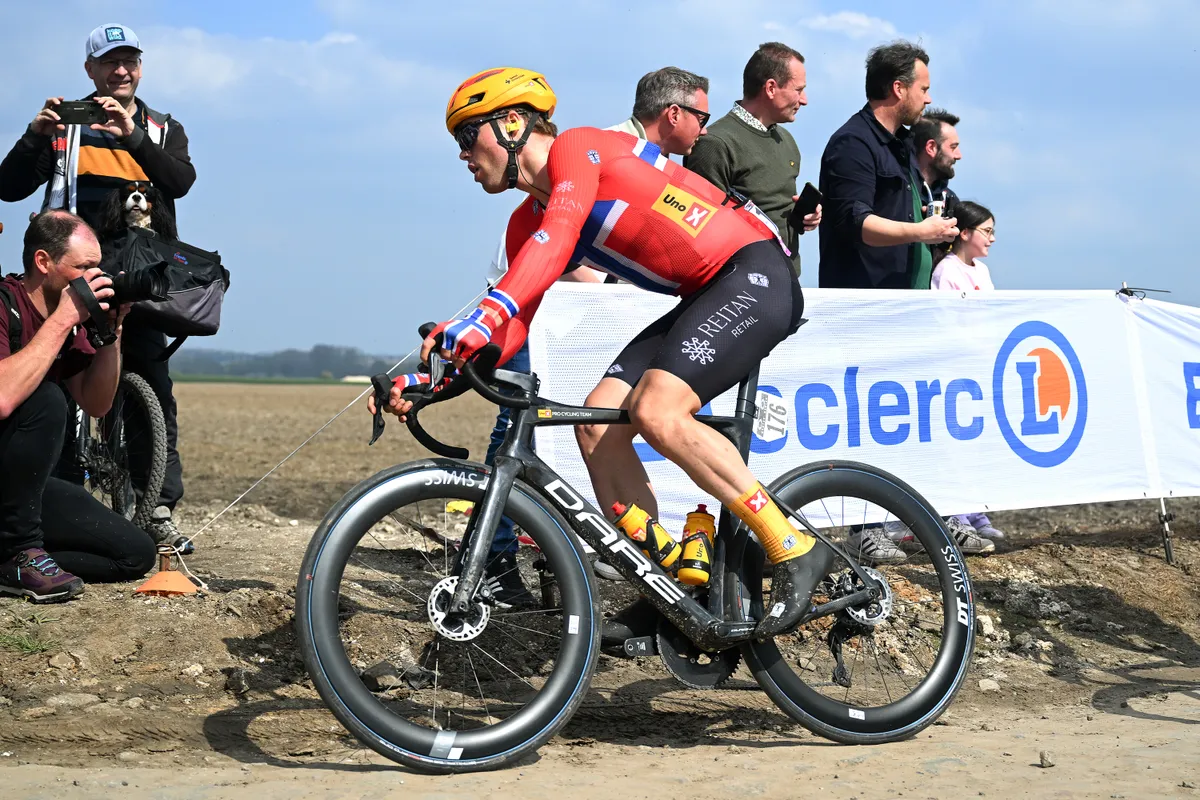
Jumbo-Visma and Lidl-Trek aren’t the only teams to have used 1x in 2023.
Casper von Folsach is an Olympic and World Championship medallist on the track. He’s also currently a performance coach at Uno-X Pro Cycling, a team not afraid to push technical boundaries, having adopted 1x in the Classics and also experimented with the use of Classified’s front-derailleur-replacing, hub-based system.

His main role is product development and equipment selection for the team. Talking to BikeRadar, he tells us that Uno-X uses Shimano products, but is not a sponsored team, which enables greater freedom in component selection.
“With an appropriate chainring and a well-designed chain guide, it is much less likely to drop your chain than with a double setup,” says von Folsach of the improved chain retention of 1x. “I’ve tried myself but I cannot get the chain to come off the bike, even with your hands it is nearly impossible.”
Why now?
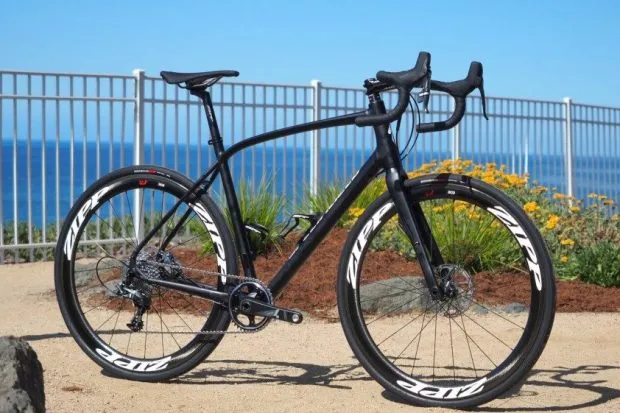
1x for the road first arrived in 2015 with the launch of SRAM Force 1 and Rival 1, which followed the Force CX1 cyclocross drivetrain.
While uptake was quick on the cyclocross scene, with the same later applying to gravel riding, road adoption, as we’ve learnt, has lagged behind. That, however, hasn’t stopped the technology from maturing significantly.
In recent years, improved technological development and a greater understanding of drivetrain performance have given 1x drivetrains a fresh start. Uno-X’s von Folsach tells us that growing demand has also pressured manufacturers into making better equipment.
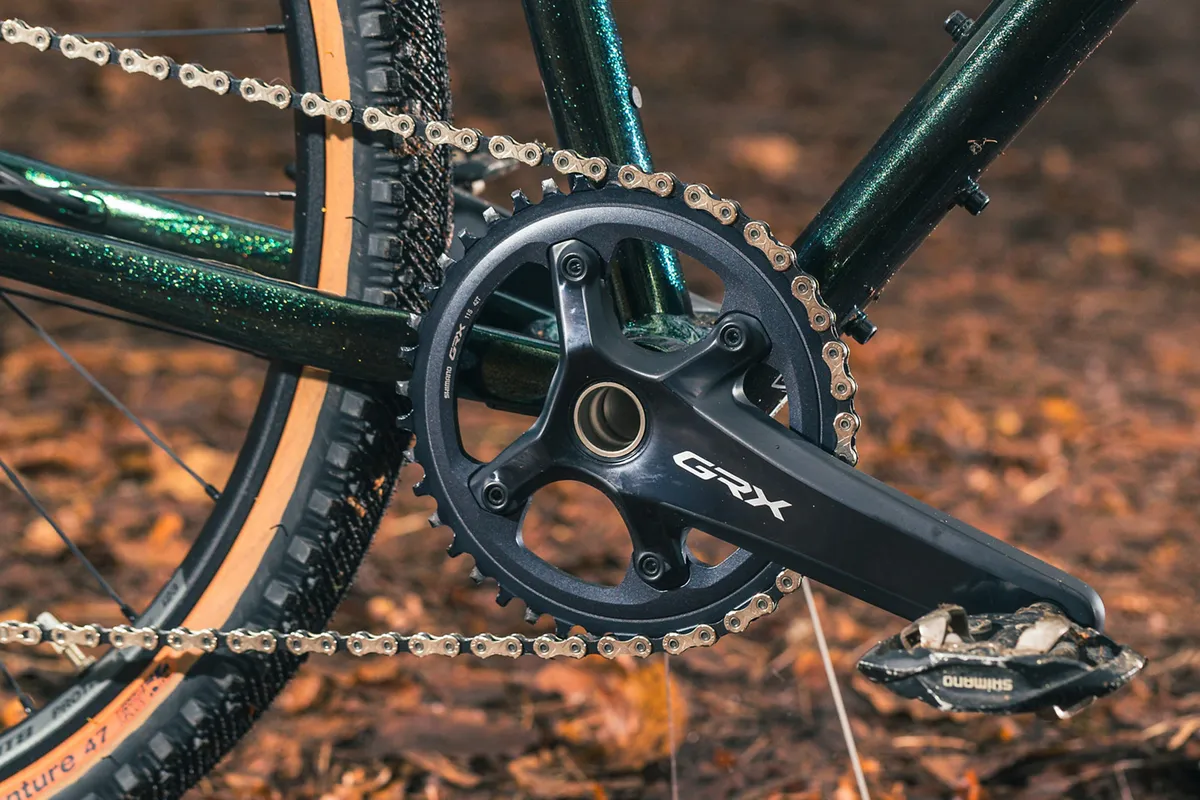
“There has been a lot of change,” he says. “In the past, you saw a lot of chain drops due to less than ideal setups. Before it was as widely adopted, a lot of manufacturers didn’t make these wide-narrow chainrings, that has now changed.”
1x can be lighter and more aerodynamic than a traditional system, even if the differences can be small, and the theory says they can offer greater chain retention and efficiency.
“It’s really hard to measure aerodynamics on a moving bike, but on a stationary bike then it is advantageous,” says Watt. It’s impossible to put an exact figure on the aerodynamic benefit of a single chainring due to the range of speeds and yaw angles, he adds.

But why van Aert and Vingegaard on stage one of the Tour de France? The opening stage of the 2023 race was one of the most challenging Grand Départs in living memory, with more than 3,000m of climbing in the Basque Country on the 182km loop from Bilbao.
After an attritional day, fireworks were let off on the Côte de Pike, a 2km climb with an average gradient of 9.4 per cent and ramps of more than 15 per cent. The Yates twins, Adam and Simon, escaped from a select group at the summit and descended as a duo, before Adam won on the uphill finish in the city centre.
“Everyone has a different job in the race, and some riders finish their job with 150km still to go,” says Watt. “It’s not as if we don’t supply enough products, the system is available to every rider and is the team’s decision.
“Jonas [Vingegaard] is the prime example, they’re riding full-gas up the final climbs. Whereas, someone like Christophe Laporte, who has done a lot of work early on, he just needs to spin up that final climb to make the time cut.”

By our reckoning, Jumbo-Visma’s use of 1x at the Tour was limited to the opening and closing stages of the race, but Mads Pedersen used a 1x drivetrain on stage seven, when he finished 10th in the bunch sprint, and stage eight, when he won.
Pedersen’s Lidl-Trek team has been an early-adopter of 1x – Lizzie Deignan won the Paris-Roubaix Femmes for the women’s squad on 1x in 2021 – but Jumbo-Visma’s use is key in turning heads, according to Watt.
“Jumbo-Visma are a huge influence, they’re the world’s number one team,” adds Watt. “They’re not the first, Lidl-Trek have been using 1x since the first year that we had access to it, but as soon as you see Wout van Aert or Jonas on it, the media attention increases.”
Why aren’t more teams using 1x?

Pedersen’s sprint victory on stage eight saw 1x leave its mark on the Tour de France. The former world champion overpowered the race's dominant fast-man, Jasper Philipsen, and van Aert, on the uphill finish into Limoges.
But one swallow does not make a summer, as far as 1x is concerned. For the vast majority of stages, SRAM-equipped riders opted for 2x drivetrains, and, as we’ve already covered, all Shimano and Campagnolo teams had 2x and 2x only at the Tour.
SRAM got the jump in mountain biking, bringing the first 1x groupset to market in the form of XX1 in October 2012, and single rings now dominate there. Shimano soon followed – but the Japanese brand has stuck resolutely to 2x on the road.
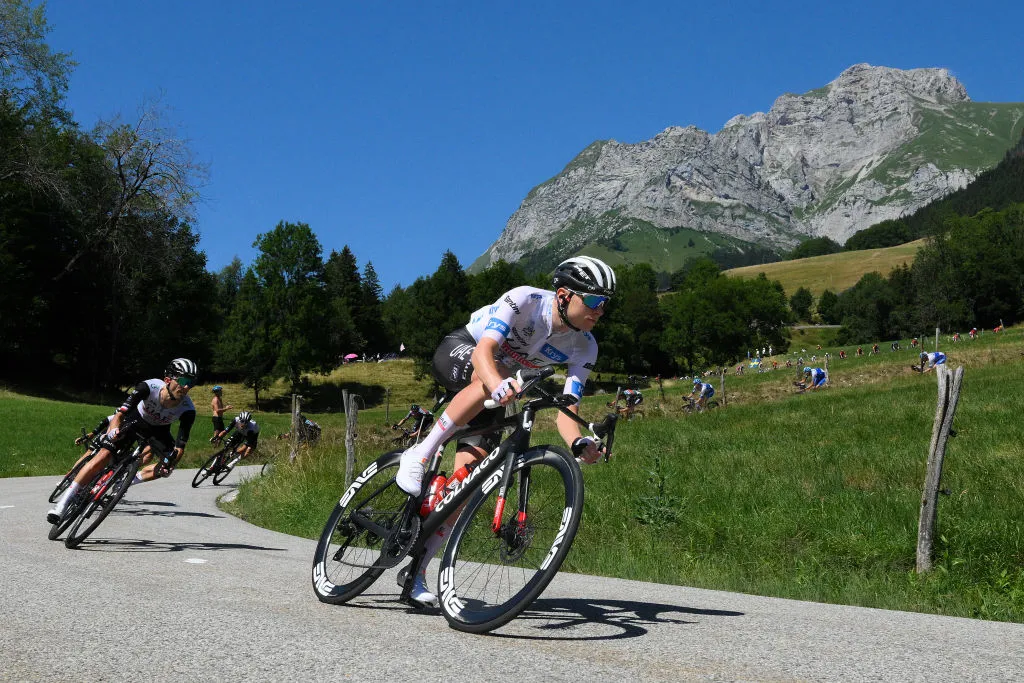
The key, according to Bert Roesems, Shimano’s technical sports manager, is in reducing jumps between gears and enabling riders to maintain their preferred cadence.
“Within our range, you have a better-divided gear ratio,” says Roesems. “Bigger steps in your cassette make for less efficient pedalling.”

That’s particularly key in the mountains, and Jumbo-Visma and Lidl-Trek’s use of 1x at the Tour was limited to the hilly roads of Bilbao or flat sprint stages, with 2x preferred in the Alps and Pyrenees.
Von Folsach and Uno-X’s approach is an interesting one. In almost every circumstance, Von Folsach says a 1x system is more efficient – but the team didn’t use 1x on their road bikes at the Tour.

“One thing is what looks correct in a spreadsheet, and the other is what can be carried out in practice,” he says. “Then there’s the effort in changing behaviours,” he adds.
“So far, we’ve only used it in one-day races, apart from when using Classified, as there’s more [time for] preparation both before and after. We’re not at the point where mechanics would be happy to change 24 bikes from 1x to 2x or vice-versa in between stages.”
What about sponsor pressure?
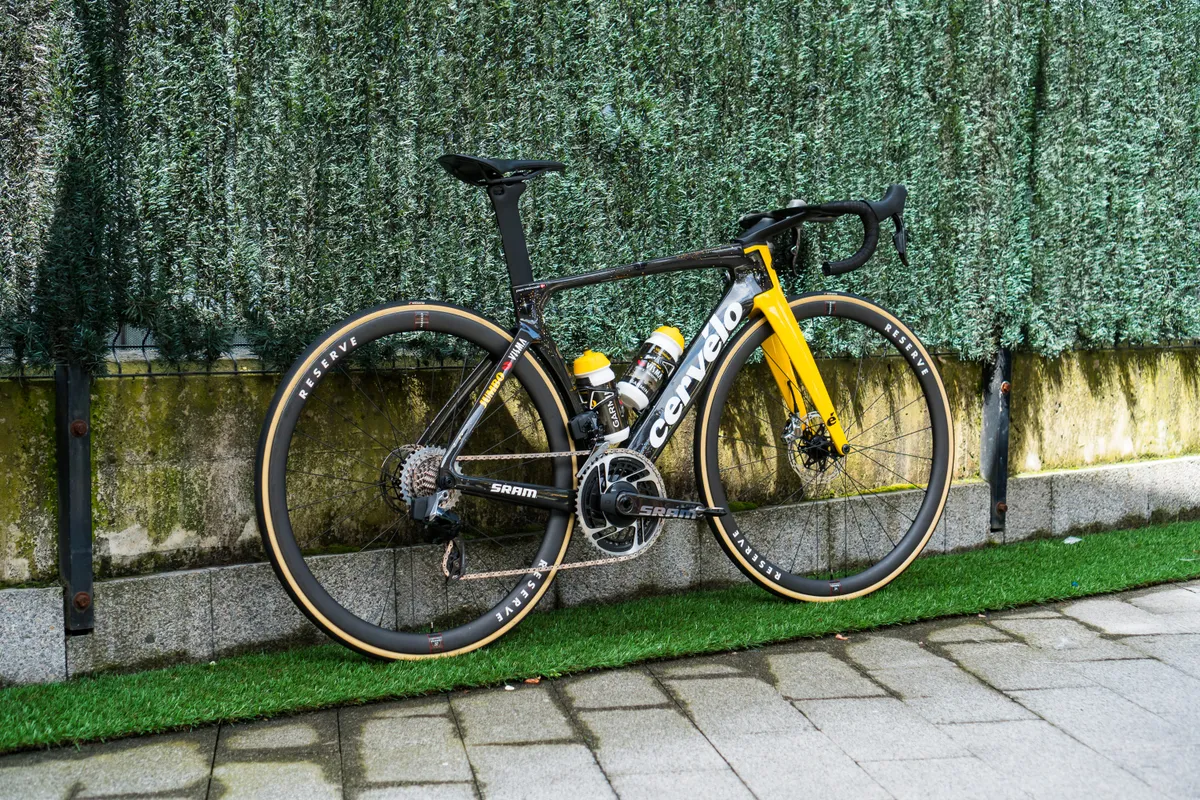
Uno-X aside – and, remember, that team uses Shimano groupsets, but isn’t officially sponsored – we’ve seen a difference in the approach of (or options available to) Shimano and SRAM teams.
Ultimately, it’s always difficult to know if riders are using equipment because they want to, or because they have to, whether that be through team or sponsor pressure. In rare cases, we see riders and teams go against what sponsors want, but otherwise, cycling is a sport that survives on sponsorship.
However, when asked, SRAM’s Watt is unequivocal in explaining the role of the component supplier, even if the final stage into Paris provided an attractive photo opportunity.
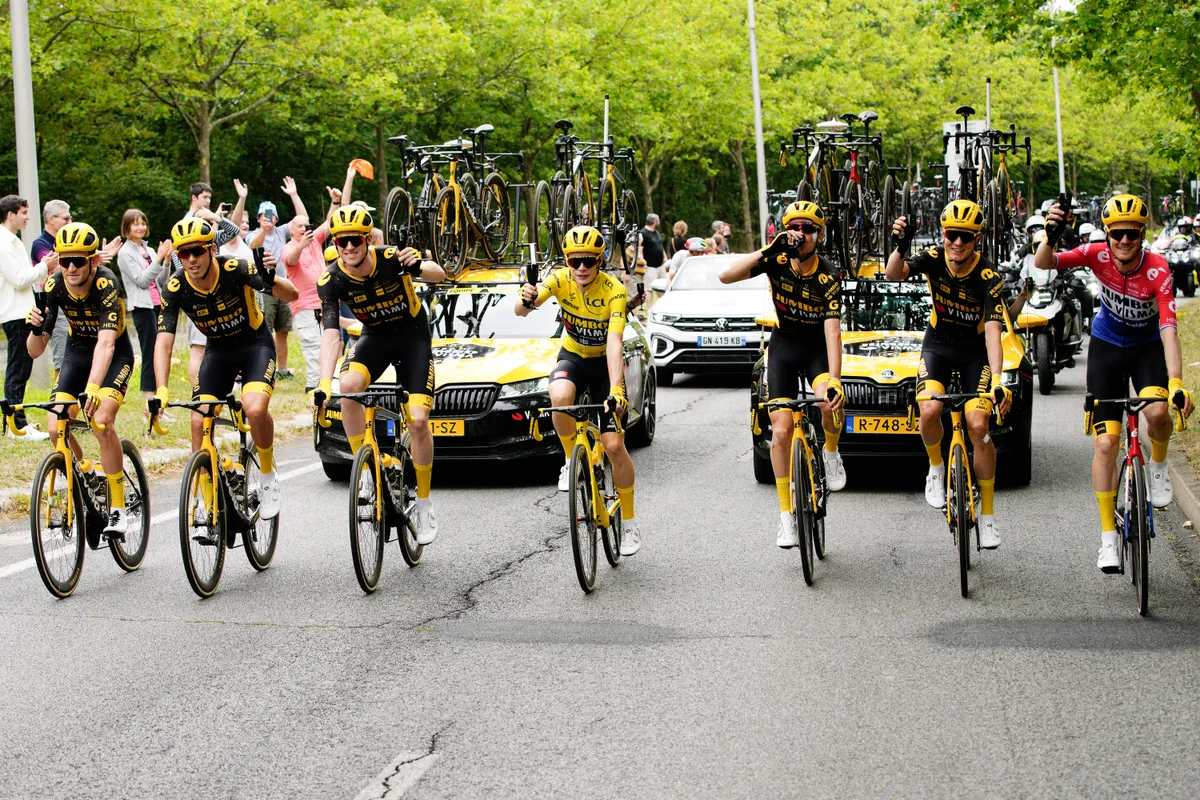
“There’s been absolutely zero pressure [to go onto a 1x system],” says Watt. “We supplied the team with every option available in our catalogue, they tested and chose everything themselves.”
For Shimano-sponsored teams, it’s a different matter. “Our sponsored teams don’t have the option to use 1x,” says Roesems. “We don’t offer that technology and the derailleur isn’t equipped to handle a single chainring.”

The Tour de France is over, so what’s next for 1x?
With the Tour de France over, and Jonas Vingegaard sealing an eventually dominant victory over Tadej Pogačar, the shutters have come down on cycling’s biggest shop window. So what now?
“I don’t think 1x is going anywhere,” says Watts, although SRAM, of course, has skin in the game. “The feedback has been unbelievable and people are starting to realise its full capabilities. Jumbo-Visma have proved that if you get the gear ratios correct then it’s versatile. I truly believe we will see more and more of it.”
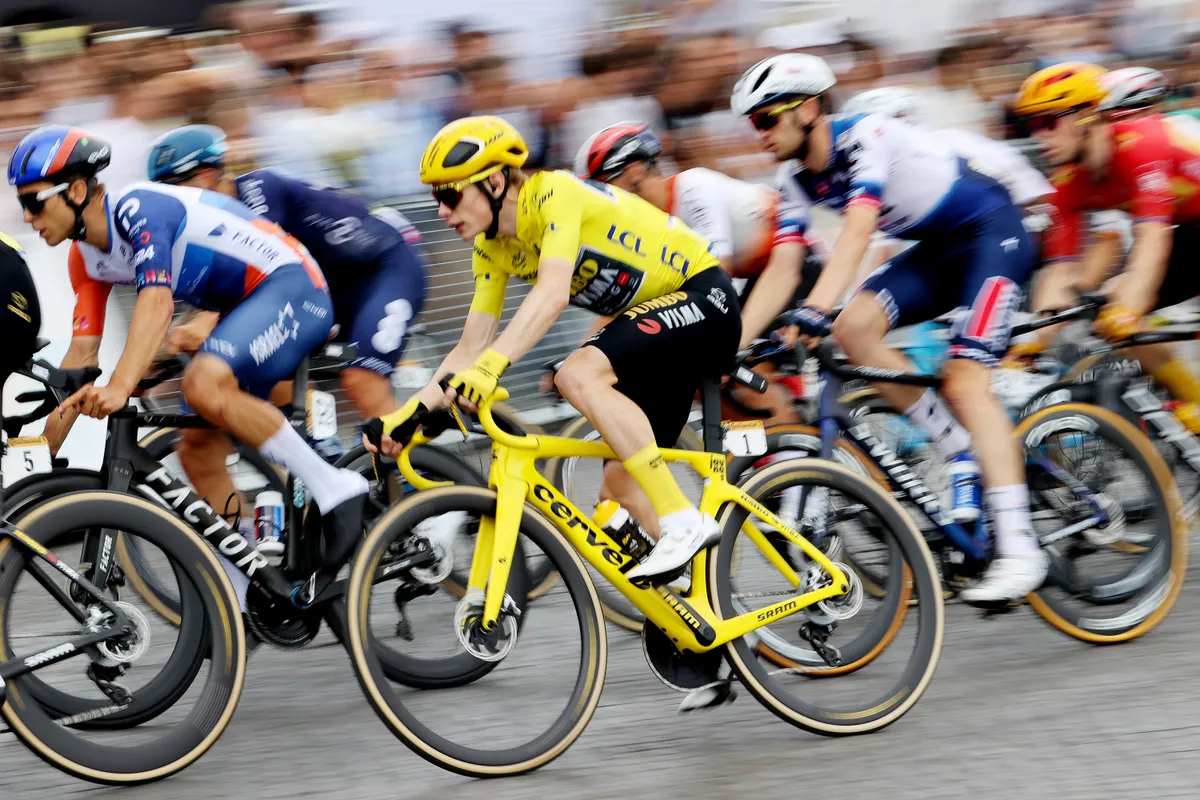
New technological developments, such as the Classified system, may hasten the winds of change, too. The upstart’s PowerShift hub replaces the front derailleur but offers the range of a 2x system. Classified is undoubtedly gaining momentum – and winning investment – but there are drawbacks. What’s more, neither Shimano nor SRAM directly endorses the new system.
However, the Classified system has already been tested at the highest level. Victor Campenaerts rode it during the Classics season, and Uno-X trialled it in the Tour of Hungary. We wouldn’t be surprised if Classified stepped things up with a bid to sponsor a pro team in the near future.
As for Shimano, when pushed, the brand remained tight-lipped on whether any single-chainring options would be coming to its road range.
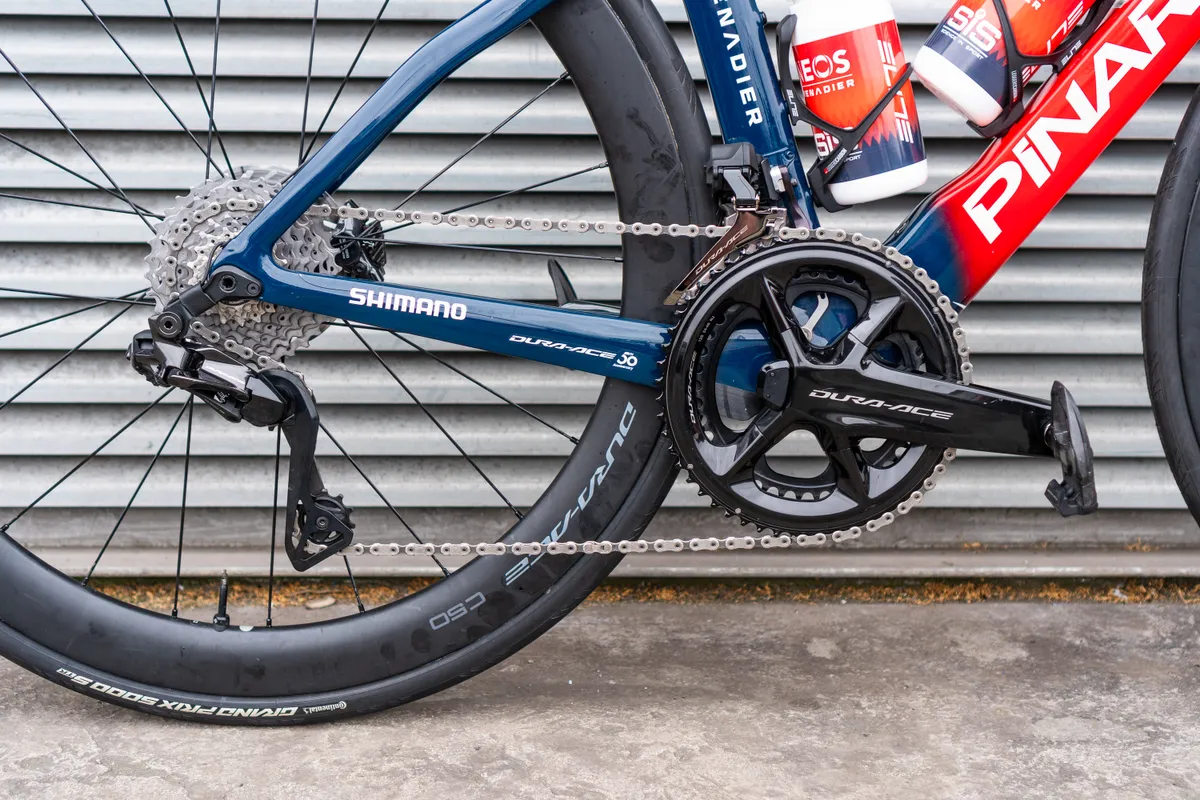
“We are always developing new products and looking for new innovations, where we listen to the feedback we get from our sponsored teams and the market,” says Roesems.
No surprises there, either. The Japanese manufacturer rarely hops on trends, instead waiting to see how they play out. Remember how long it took for Shimano to respond to SRAM and Campagnolo’s move to 12-speed?
Ultimately, Shimano’s next move, as the dominant player in the road groupset market, and the supplier to 14 of the 18 men’s WorldTour teams (to SRAM’s three and Campagnolo’s one), is key.
However, if you’d have told Adam Blythe five years ago that both the Giro d’Italia and Tour de France would be won by a rider using, at least in part, a 1x system, we’re not too sure what his response would have been. Perhaps 1x has a future on the road, after all.
